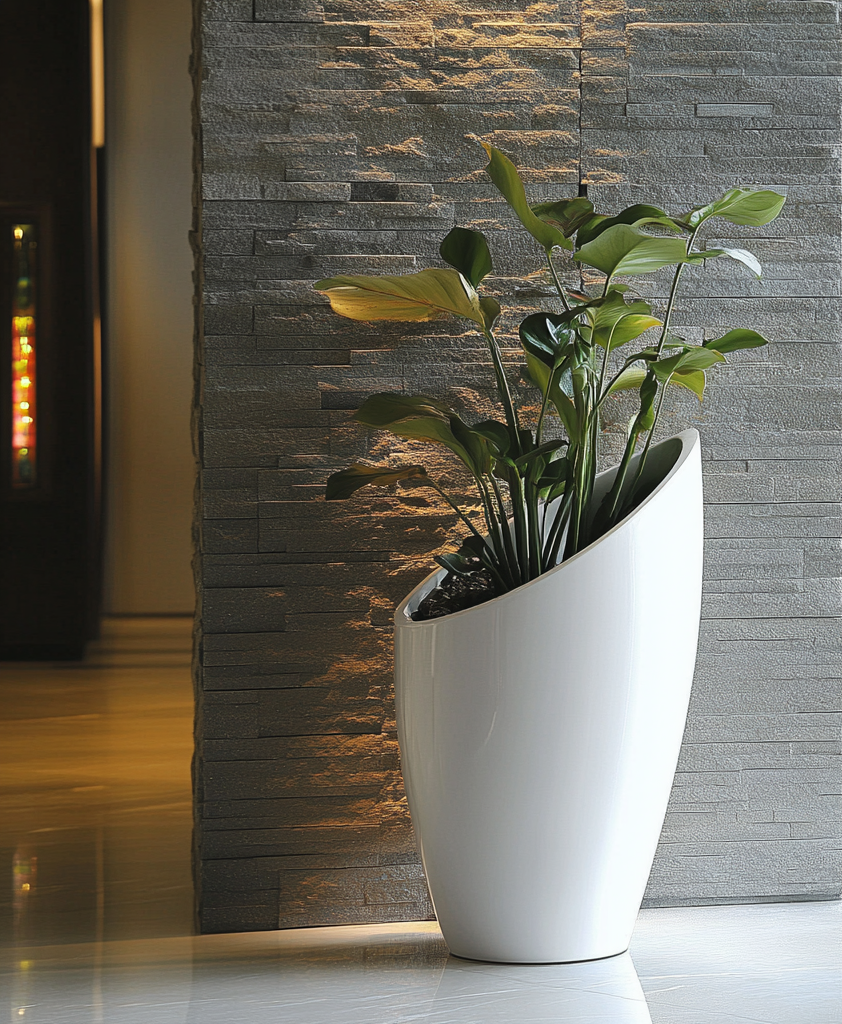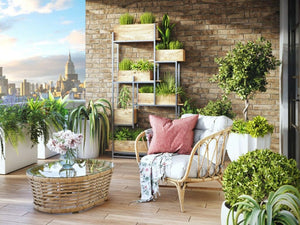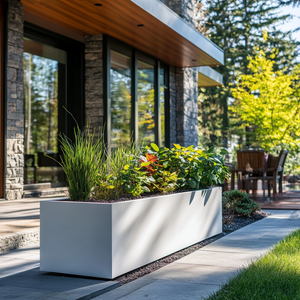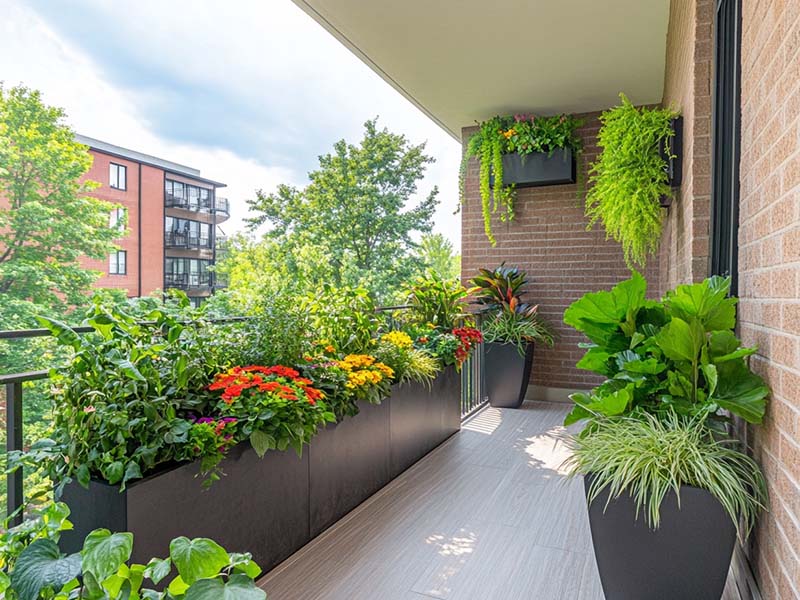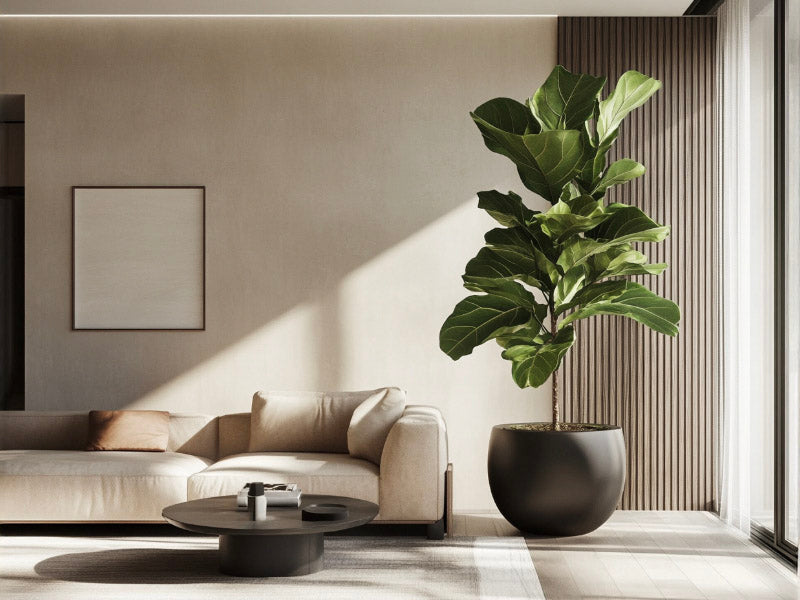Indoor plants have become increasingly popular in office environments, and for good reason. They offer a multitude of benefits that can enhance both the physical and mental well-being of employees. From improving air quality to boosting mood and productivity, incorporating plants into the workplace can create a more pleasant and inspiring atmosphere.
However, offices without windows present unique challenges for plant care. Limited natural light and the potential for decreased airflow can make it difficult to maintain healthy and thriving plants. Nevertheless, with careful selection and proper care, it is possible to create a lush and vibrant indoor garden even in a windowless space.
Benefits of Indoor Plants in a Windowless Office
Indoor plants offer a multitude of advantages for office environments, particularly those without windows. Their presence can significantly enhance both the physical and mental well-being of employees.
- Improved Air Quality: Indoor plants naturally purify the air by removing harmful toxins and pollutants. This is especially beneficial in windowless offices, where ventilation can be limited.
- Enhanced Mood and Productivity: Studies have shown that exposure to greenery can reduce stress, improve mood, and increase concentration. This can lead to higher productivity and job satisfaction.
- Aesthetic Appeal: Indoor plants add a touch of nature to the office environment, creating a more visually appealing and inviting space. They can also help to break up the monotony of office furnishings.
Criteria for Choosing Plants for a Windowless Office
When selecting low light office plants, it is essential to consider several key factors that will contribute to their success and overall benefit to the environment:
- Low Light Tolerance: As offices without windows lack natural sunlight, plants must be able to thrive in low-light conditions. Some plants have evolved to adapt to shaded environments, allowing them to flourish even in spaces with minimal illumination.
- Low Maintenance: Busy office environments often leave limited time for plant care. Choosing plants that require minimal maintenance, such as infrequent watering or pruning, can help ensure their longevity and reduce the burden on office staff.
- Air Purifying Qualities: Indoor plants play a vital role in improving air quality by removing harmful toxins and pollutants. In windowless offices, where ventilation can be limited, plants with strong air-purifying properties can help create a healthier and more pleasant working environment.
- Compact Size (Optional): The available space in a windowless office may be limited, making it important to select plants that are suitable for smaller areas. Compact plants, such as succulents or trailing vines, can add greenery without taking up excessive room.
Top 10 Indoor Plants for Offices with No Windows
If you’re looking for ways to decorate a windowless office with indoor plants, here are the best plants for office with no windows:
1. Snake Plant (Sansevieria)

- Description: A succulent with upright, sword-shaped leaves that can vary in color from dark green to variegated with yellow or white stripes. Snake plants are known for their unique appearance and resilience.
- Light Requirements: Thrives in low-light conditions, making it an ideal choice for offices without windows. It can tolerate periods of neglect and still maintain its health.
- Watering Needs: Allow the soil to dry out completely between waterings, as overwatering can lead to root rot. Snake plants are drought-tolerant and can withstand periods of drought.
- Benefits: Not only does the snake plant remove harmful toxins like formaldehyde and benzene from the air, but it also releases oxygen at night, making it a beneficial addition to bedrooms. It's a true air-purifying powerhouse.
2. Dracaena

- Description: A genus of tropical plants that includes a variety of species and cultivars with diverse appearances. Dracaenas can range from small, shrub-like plants to large, tree-like specimens with long, slender leaves.
- Light Requirements: While most dracaenas prefer bright, indirect light, many varieties can tolerate low-light conditions. Some popular choices for windowless offices include Dracaena marginata (Madagascar Dragon Tree) and Dracaena reflexa (Janet Craig).
- Watering Needs: Water dracaenas sparingly, allowing the soil to dry out slightly between waterings. Avoid overwatering, as it can lead to root rot.
- Benefits: In addition to removing harmful toxins from the air, dracaenas can also help to increase humidity levels in dry office environments. This can be particularly beneficial during the winter months when indoor air tends to be dry.
3. ZZ Plant (Zamioculcas Zamiifolia)

- Description: A succulent with glossy, dark green leaves that grow in clusters from underground tubers. The ZZ plant is known for its durability and low-maintenance requirements.
- Light Requirements: Thrives in low-light conditions and can tolerate periods of neglect. It is an excellent choice for offices with limited natural light.
- Watering Needs: Water ZZ plants infrequently, allowing the soil to dry out completely between waterings. Overwatering can lead to root rot.
- Benefits: The ZZ plant is a true air-purifying champion, effectively removing harmful toxins like formaldehyde, benzene, and toluene from the air. Its ability to thrive in challenging conditions makes it a reliable choice for any office environment.
4. Pothos (Epipremnum aureum)

- Description: A versatile vine with heart-shaped leaves that can be trained to climb or trail. Pothos plants come in a variety of colors and patterns, including solid green, variegated with yellow or white, and even variegated with neon colors.
- Light Requirements: Thrives in low-light conditions and can tolerate periods of neglect. Pothos plants can adapt to a wide range of lighting conditions.
- Watering Needs: Water pothos plants moderately, allowing the soil to dry out slightly between waterings. Avoid overwatering, as it can lead to root rot.
- Benefits: Pothos plants are not only effective air purifiers, but they also help to increase humidity levels in dry office environments. This can be beneficial for both plants and people, as dry air can lead to discomfort and respiratory issues.
5. Peace Lily (Spathiphyllum)

- Description: A flowering plant with white or cream-colored blooms that are surrounded by large, glossy green leaves. Peace lilies are known for their elegant appearance and air-purifying properties.
- Light Requirements: Prefers bright, indirect light but can tolerate low-light conditions. Peace lilies will bloom more frequently in brighter light.
- Watering Needs: Keep the soil consistently moist, but avoid overwatering. Peace lilies are sensitive to root rot, so it's important to allow the soil to dry out slightly between waterings.
- Benefits: In addition to removing harmful toxins from the air, peace lilies can also help to increase humidity levels.This can be particularly beneficial during the winter months when indoor heating can dry out the air.
6. Aglaonema (Chinese Evergreen)

- Description: A low-growing plant with variegated leaves that come in a variety of colors and patterns. Aglaonema plants are known for their durability and low maintenance.
- Light Requirements: Thrives in low-light conditions and can tolerate periods of neglect. Aglaonema plants are an excellent choice for offices with limited natural light.
- Watering Needs: Water aglaonema plants moderately, allowing the soil to dry out slightly between waterings. Avoid overwatering, as it can lead to root rot.
- Benefits: Aglaonema plants are effective air purifiers that can help to remove harmful toxins from the air. They are also known for their ability to improve indoor air quality by increasing humidity levels.
7. Cast Iron Plant (Aspidistra elatior)

- Description: A tough plant with large, dark green leaves that grow from underground rhizomes. Cast iron plants are known for their durability and ability to withstand neglect.
- Light Requirements: Thrives in low-light conditions and can tolerate periods of neglect. Cast iron plants are an excellent choice for offices with limited natural light.
- Watering Needs: Water cast iron plants infrequently, allowing the soil to dry out completely between waterings. Cast iron plants are drought-tolerant and can withstand periods of neglect.
- Benefits: Known for their air-purifying properties, these plants help to create a cleaner and healthier breathing space by removing harmful toxins from the air. Their ability to increase humidity levels further enhances indoor air quality.
8. Philodendron

- Description: A genus of tropical plants that includes a variety of species and cultivars with diverse appearances. Philodendrons can range from small, vining plants to large, tree-like specimens with glossy green leaves.
- Light Requirements: Varies depending on the variety, but most philodendrons can tolerate low-light conditions. Some popular choices for windowless offices include Philodendron hederaceum (Heartleaf Philodendron) and Philodendron scandens (Vine Philodendron).
- Watering Needs: Water philodendrons moderately, allowing the soil to dry out slightly between waterings. Avoid overwatering, as it can lead to root rot.
- Benefits: These plants are nature's air fresheners, effectively removing harmful toxins from the air and improving overall indoor air quality. By increasing humidity levels, they also contribute to a more comfortable and healthy environment.
9. Spider Plant (Chlorophytum comosum)

- Description: A popular houseplant with long, slender leaves and small plantlets called spiderettes. Spider plants are known for their ease of care and air-purifying properties.
- Light Requirements: Thrives in low-light conditions and can tolerate periods of neglect. Spider plants are an excellent choice for offices with limited natural light.
- Watering Needs: Water spider plants regularly, keeping the soil moist but not soggy. Avoid overwatering, as it can lead to root rot.
- Benefits: These plants are natural air purifiers that help to create a healthier indoor environment by removing harmful toxins and pollutants. Their ability to increase humidity levels further enhances the air quality and can help to alleviate dry skin and respiratory discomfort.
10. Parlor Palm (Chamaedorea elegans)

- Description: A small palm tree with feathery fronds that adds a touch of elegance to indoor spaces. Parlor palms require relatively low maintenance and can withstand many conditions.
- Light Requirements: Prefers bright, indirect light but can tolerate low-light conditions. Parlor palms will grow more slowly in low-light conditions.
- Watering Needs: Water parlor palms regularly, keeping the soil moist but not soggy. Avoid overwatering, as it can lead to root rot.
- Benefits: These plants are a valuable addition to any indoor space, acting as natural air purifiers and helping to improve overall air quality. By increasing humidity levels, they contribute to a more comfortable and healthy environment.
Care Tips
To ensure the health and longevity of your plants for windowless office, it's essential to provide them with the proper care.
Artificial Lighting

- Types of artificial lights suitable for plants: Fluorescent lights, LED lights, and grow lights are all effective options for providing plants with the necessary light. Each type has its own advantages and disadvantages, so consider factors such as energy efficiency, light spectrum, and heat output when making your selection.
- Recommended duration and distance from plants: Plants typically require 12-16 hours of light per day to thrive. Place lights at a distance of 6-12 inches from the plants to avoid scorching the leaves. The ideal distance may vary depending on the type of light and the specific needs of the plant.
Watering and Humidity Management
- Importance of proper watering: Overwatering is a common cause of plant death. Allow the soil to dry out slightly between waterings to prevent root rot. The frequency of watering will depend on factors such as the plant species, pot size, and the temperature and humidity of the environment.
- Tips for maintaining humidity: Indoor plants often benefit from higher humidity levels, especially in dry office environments. Here are some tips for maintaining humidity:
- Mist plants regularly: Misting the leaves with water can help to increase humidity around the plant.
- Use a humidifier: A humidifier can be a convenient way to increase humidity levels in a room.
- Place a pebble tray filled with water under the plant pot: As the water evaporates, it will help to increase humidity around the plant.
Watering schedule for different plants
|
Plant Name |
Watering Frequency |
Soil Moisture |
|
Snake Plant (Sansevieria) |
Once every 2-3 weeks |
Dry to slightly moist |
|
Dracaena |
Once every 1-2 weeks |
Moist but not soggy |
|
ZZ Plant (Zamioculcas Zamiifolia) |
Once every 2-3 weeks |
Dry to slightly moist |
|
Pothos (Epipremnum aureum) |
Once every 1-2 weeks |
Moist but not soggy |
|
Peace Lily (Spathiphyllum) |
Once every 1-2 weeks |
Moist |
|
Aglaonema (Chinese Evergreen) |
Once every 1-2 weeks |
Moist but not soggy |
|
Cast Iron Plant (Aspidistra elatior) |
Once every 2-3 weeks |
Dry to slightly moist |
|
Philodendron |
Once every 1-2 weeks |
Moist but not soggy |
|
Spider Plant (Chlorophytum comosum) |
Once every 1-2 weeks |
Moist |
|
Parlor Palm (Chamaedorea elegans) |
Once every 1-2 weeks |
Moist |
Common Problems and Solutions
Indoor plants, even when carefully cared for, can sometimes encounter issues. Identifying and addressing these problems promptly can help to maintain the health and vitality of your plants.
- Yellowing Leaves: Yellowing leaves can be a sign of various problems, including overwatering, underwatering, or nutrient deficiencies. If the leaves are yellowing from the tips, it may indicate underwatering. If the leaves are yellowing from the base, it may indicate overwatering. Adjust your watering schedule and consider fertilizing the plant if necessary.
- Overwatering and Root Rot: Overwatering can lead to root rot, a condition that can cause the roots to decay. Signs of overwatering include mushy leaves and root rot. Allow the soil to dry out completely between waterings and repot the plant if necessary.
- Pest Control: Common pests that can affect indoor plants include aphids, mealybugs, and spider mites. Inspect your plants regularly for signs of pests and take action if necessary. Organic insecticides or neem oil can be effective treatments for many common pests.
The Bottom Line
Indoor plants can significantly enhance the quality of life in a windowless office. By carefully selecting plants that are well-suited to low-light conditions and providing them with appropriate care, you can create a vibrant and healthy indoor garden. The benefits of improved air quality, enhanced mood, and increased productivity make indoor plants a valuable addition to any workplace.
We encourage you to experiment with different plants and find the ones that best suit your office environment. If you have any questions or would like to share your experiences, please leave a comment below.


